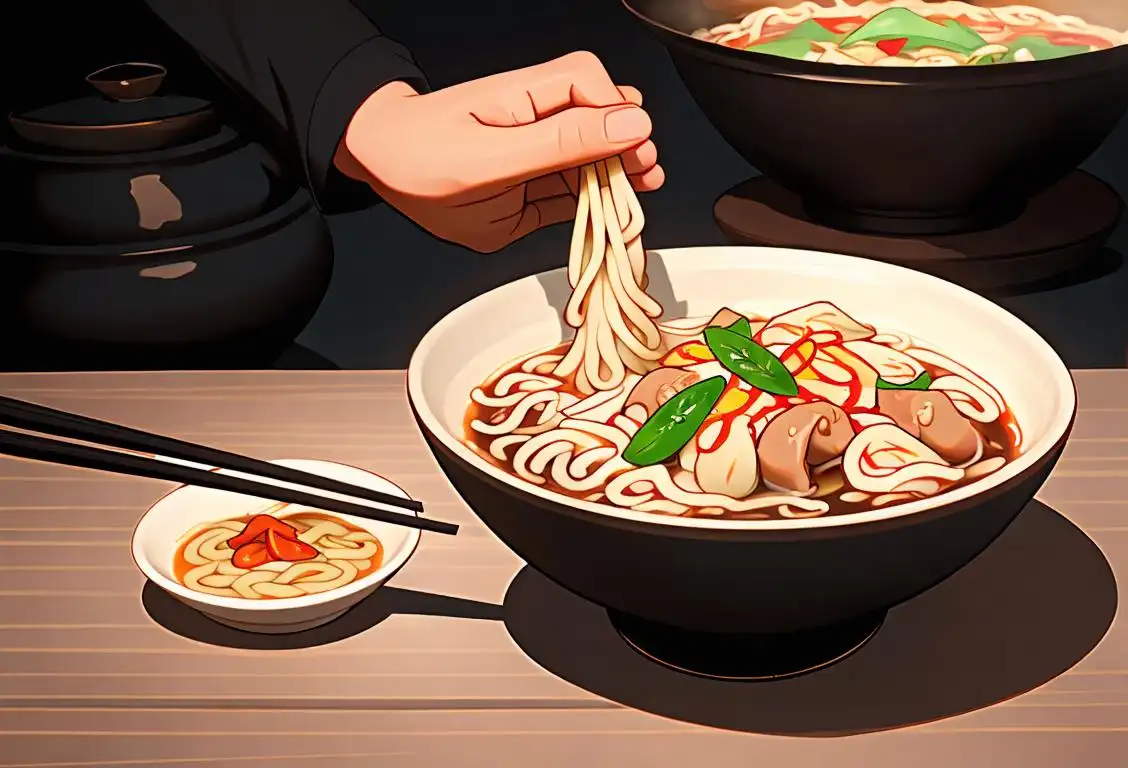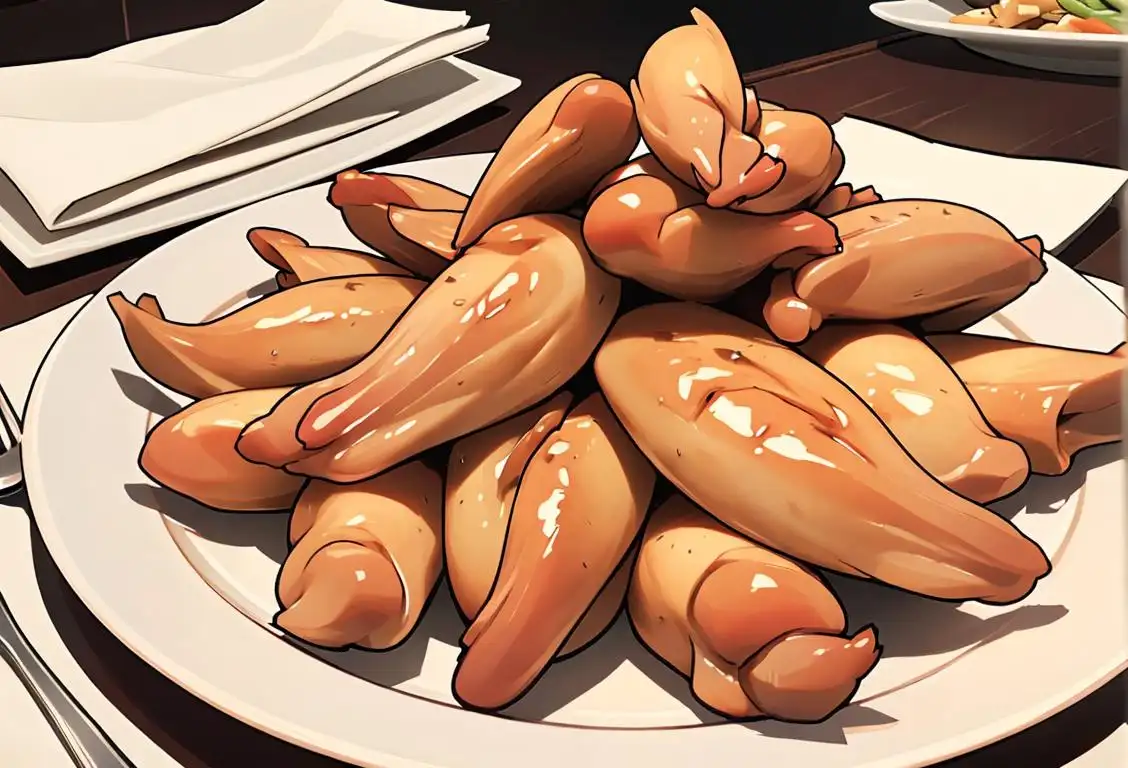National Chopstick Day

Hey there chopstick enthusiasts! Get ready to celebrate National Chopstick Day, a day dedicated to those handy utensils that make eating sushi and other delicious Asian cuisine an adventurous experience! Let's dive into the history of chopsticks and explore their popularity in the world of food.
When is Chopstick Day?
It's national chopstick day on the 6th February.
The Origins of Chopsticks
Ancient Chinese civilization, known for its marvelous inventions, introduced the world to chopsticks over 5,000 years ago. Initially used for cooking and serving food, chopsticks later became popular as eating utensils. Legend has it that they were inspired by the practice of using twigs to pick up hot food from cooking vessels without burning one's fingers. Talk about culinary ingenuity! Since then, chopsticks have spread to various Asian countries, each adding its own flavor to their design and style.
Chopsticks Around the World
While chopsticks are closely associated with Chinese and Japanese cuisine, they have also found their way into other cultural traditions. In countries like Korea and Vietnam, chopsticks are an integral part of the dining experience. However, it's important to note that chopstick usage may vary slightly between these countries. So, if you find yourself traveling in Asia, make sure to brush up on some chopstick etiquette to avoid any accidental cultural mishaps!
The Rise of Chopstick Challenges
With the rise of social media challenges, it was only a matter of time before chopstick challenges became a thing! You might have come across videos of people attempting to pick up various objects with chopsticks, testing their dexterity and skill. From marshmallows to grains of rice, these challenges can be both entertaining and frustrating to watch. Just remember, practice makes perfect!
History behind the term 'Chopstick'
1200 CE
The Birth of Chopsticks
Chopsticks, the ancient eating utensils used in East Asia, were first developed in China during the Shang Dynasty (c. 1200 BCE - 1046 BCE). Initially, they were primarily used as cooking tools rather than for eating. The earliest chopsticks were likely made from twigs or bamboo skewers, and their simple design made them easy to produce and handle.
500 CE
Spreading Chopsticks to Japan
In the 5th century CE, chopsticks made their way from China to Japan, bringing with them cultural influences that would shape Japanese dining traditions. The introduction of chopsticks in Japan coincided with the spread of Buddhism, which further popularized the use of these utensils as they were preferred by the monks for their vegetarian diet.
500-1500 CE
Chopsticks in Korean Cuisine
During the period between the 5th and 15th centuries, Korean cuisine adopted chopsticks as the main eating utensils. Korean chopsticks, known as 'jeotgarak', have a unique shape and design, with narrow and flat rectangular ends. They are typically made of metal, brass, or stainless steel, in contrast to the wooden chopsticks commonly used in China and Japan.
1600-1700 CE
Chopsticks and Social Etiquette in China
During the Ming and Qing dynasties (16th-19th centuries CE), chopsticks became more than just eating utensils in China. They gained cultural significance and were associated with social etiquette and proper table manners. The length and material of the chopsticks used by individuals conveyed their social status, with longer and more ornate chopsticks indicating higher rank and wealth.
19th Century
Chopsticks Spreading to Western Countries
As international trade and cultural exchange expanded in the 19th century, chopsticks started to attract the attention of Western countries. Chopsticks became popular items of curiosity and exoticism, with many Westerners collecting them as souvenirs. The interest in Asian cuisine and culture led to the adoption of chopsticks in Western countries, especially with the rise of sushi and other Asian foods in the latter half of the 20th century.
Present Day
Chopsticks as Cultural Icons
In modern times, chopsticks have become cultural icons representing East Asian dining traditions. They are not only practical eating utensils but also symbols of Asian cuisine, mindfulness, and sustainability, as they are reusable and reduce the need for disposable cutlery. Today, chopsticks are widely recognized and appreciated worldwide as an integral part of Asian culinary heritage.
Did you know?
Did you know that the world record for most sushi rolls made in one hour using chopsticks is 49 rolls? That's some serious sushi-eating skills!Tagged
awareness food funFirst identified
6th February 2016Most mentioned on
6th February 2016Total mentions
14Other days
Sweet Tea Day
Agriculture Day
Cheese Pizza Day
Bacon Day
Pumpkin Day
Medal Of Honor Day
Vodka Day
Foundation Day
Guac Day
Wing Day









